I am writing a piece of code that figures out what frequencies(notes) are being played at any given time of a song (note currently I am testing it grabbing only the first second of the song). To do this I break the first second of the audio file into 8 different chunks. Then I perform an FFT on each chunk and plot it with the following code:
% Taking a second of an audio file and breaking it into n many chunks and
% figuring out what frequencies make up each of those chunks
clear all;
% Read Audio
fs = 44100; % sample frequency (Hz)
full = audioread('song.wav');
% Perform fft and get frequencies
chunks = 8; % How many chunks to break wave into
for i = 1:chunks
beginningChunk = (i-1)*fs/chunks+1
endChunk = i*fs/chunks
x = full(beginningChunk:endChunk);
y = fft(x);
n = length(x); % number of samples in chunk
amp = abs(y)/n; % amplitude of the DFT
%%%amp = amp(1:fs/2/chunks); % note this is my attempt that I think is wrong
f = (0:n-1)*(fs/n); % frequency range
%%%f = f(1:fs/2/chunks); % note this is my attempt that I think is wrong
figure(i);
plot(f,amp)
xlabel('Frequency')
ylabel('amplitude')
end
When I do that I get graphs that look like these:


It looks like I am plotting too many points because the frequencies go up in magnitude at the far right of graphs so I think I am using the double sided spectrum. I think I need to only use the samples from 1:fs/2, the problem is I don't have a big enough matrix to grab that many points. I tried going from 1:fs/2/chunks, but I am unconvinced those are the right values so I commented those out. How can I find the single sided spectrum when there are less than fs/2 samples?
As a side note when I plot all the graphs I notice the frequencies given are almost exactly the same. This is surprising to me because I thought I made the chunks small enough that only the frequency that's happening at the exact time should be grabbed -- and therefore I would be getting the current note being played. If anyone knows how I can single out what note is being played at each time better that information would be greatly appreciated.